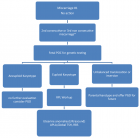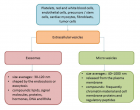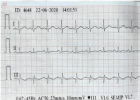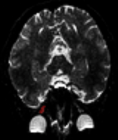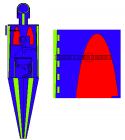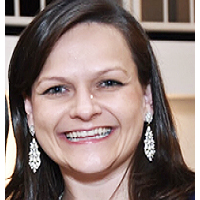Abstract
Research Article
Scientific Analysis of Eucharistic Miracles: Importance of a Standardization in Evaluation
Kelly Kearse* and Frank Ligaj
Published: 13 November, 2024 | Volume 8 - Issue 1 | Pages: 078-088
Numerous instances of consecrated communion wafers turning into human tissue and blood have been reported throughout history and the contemporary international media, referred to as Eucharistic miracles. Various suggestions have been put forth to explain such phenomena, ranging from miraculous to natural. Here, a novel demonstration is provided showing that the appearance of a bleeding host can occur by placing ordinary, non-consecrated wafers under similar conditions as described for many of these events. Using basic forensic methods, distinctions between ensuant reddish areas and genuine blood were noted. In previous studies with miracle wafers, isolated DNA was resistant to amplification with human-specific primers, which has been attributed to its divine nature. The current study shows that multiple types of non-human DNA existed in unconsecrated wafers, providing an alternative explanation for such findings. Finally, a minimal protocol of scientific examination is outlined to aid in the standardization of such investigations in the future, including a distinctive approach to authenticate the genuine shared origin of such occurrences.
Read Full Article HTML DOI: 10.29328/journal.jfsr.1001068 Cite this Article Read Full Article PDF
Keywords:
Eucharistic miracles; Communion wafers; Forensics; Non-human DNA
References
- Spitzer R. Contemporary Scientifically Validated Miracles Associated with Blessed Mary, Saints and the Holy Eucharist. Magis Center; 2020.
- Hemler S, Granger L. The science of Eucharistic miracles. Arlington Catholic Herald. 2022.
- Real Presence Eucharistic Education and Adoration Association, Inc. The Eucharistic Miracles of the World. Eternal Life; 2016.
- Serafini F. A Cardiologist Examines Jesus. Sophia Institute Press; 2021.
- Gomez RC. Mas alla de la Razon. Grupo Internacional Para La Paz Centro Internacional De Estudios Humanos; 2009.
- Becker R. Eucharistic miracles and the divine blood type. National Catholic Register. 2018. Available from: https://www.ncregister.com/blog/eucharistic-miracles-and-the-divine-blood-type
- Senz P. Doubt the Real Presence? Try a blood miracle. Catholic Answers Magazine. 2021. Available from: https://www.catholic.com/magazine/online-edition/doubt-the-real-presence-try-a-blood-miracle
- Manning P. A mathematical case for the Real Presence. Catholic Answers Magazine. 2023. Available from: https://www.catholic.com/magazine/online-edition
- Armstrong PM. Eucharistic miracle? ‘Bleeding host’ phenomenon reported in dioceses worldwide. National Catholic Register. 2015. Available from: https://www.ncregister.com
- Gillen AL. Serratia marcescens: The miracle bacillus. 2012. Available from: https://www.catholic.com/serratiamarcescens
- Bennett JW, Bentley R. Seeing red: the story of prodigiosin. Adv Appl Microbiol. 2000;47:1-32. Available from: https://doi.org/10.1016/s0065-2164(00)47000-0
- Celedón RS, Díaz LB. Natural pigments of bacterial origin and their possible biomedical applications. Microorganisms. 2021;9(4):739. Available from: https://doi.org/10.3390/microorganisms9040739
- Afroz Toma M, Rahman MH, Rahman MS, Arif M, Nazir KHMNH, Dufossé L. Fungal pigments: carotenoids, riboflavin, and polyketides with diverse applications. J Fungi (Basel). 2023;9(4):454. Available from: https://doi.org/10.3390/jof9040454
- Linoli O. Histological, immunological and biochemical studies on the flesh and blood of the Eucharistic Miracle of Lanciano (8th century). Quad Sclavo Diagn. 1971;3:661-74. Available from: https://pubmed.ncbi.nlm.nih.gov/4950729/
- Kearse KP. The relics of Jesus and Eucharistic miracles: scientific analysis of shared AB blood type. Forensic Sci Med Pathol. 2024. Available from: https://doi.org/10.1007/s12024-024-00915-3.
- Weiring M. Eucharistic miracle science may bolster, but should not detract from faith, say experts. Catholic Review. 2023. Available from: https://catholicreview.org/eucharistic-miracle-science-may-bolster-but-should-not-distract-from-faith-say-experts/
- Trasancos S, Elliot G. Behold It Is I. TAN Books; 2021.
- Tesoriero R, Han L. Unseen new evidence: the origin of life under the microscope. Ron Tesoriero; 2013.
- Tilley M. PCR amplification of wheat sequences from DNA extracted during milling and baking. Cereal Chemistry. 2004;81:44-47. Available from: https://doi.org/10.1094/CCHEM.2004.81.1.44
- Alberti MO, Drake TA, Song L. The pH of chemistry assays plays an important role in monoclonal immunoglobulin interferences. Pract Lab Med. 2015;3:8-16. Available from: https://doi.org/10.1016/j.plabm.2015.09.001
- Sukumaran A, Thomas T, Thomas R, Thomas RE, Paul JK, Vasudevan DM. Development and troubleshooting in lateral flow immunochromatography assays. Indian J Clin Biochem. 2020;36:1-5. Available from: http://dx.doi.org/10.1007/s12291-020-00887-5
- Virgolini I, Zelger B, Zelger B, Kenner L. Reality or fiction of the “Real Presence” of Jesus Christ in the Holy Eucharist? Ann Case Rep. 2023;8:1289. Available from: https://doi.org/10.29011/2574-7754.101289
- Rodak BF, Fritsma GA, Doig K. Hematology: Clinical Principles and Applications. Saunders; St. Louis, MO: 2007;816. Available from: https://books.google.co.in/books/about/Hematology.html?id=6sfacydDNsUC
- Hanson EK, Ballantyne J. A blue spectral shift of the hemoglobin soret band correlates with the age (time since deposition) of dried bloodstains. PLoS One. 2010;5(9):e12830. Available from: https://doi.org/10.1371/journal.pone.0012830
- Maciel C, Fujita A, Gueroni DI, Ramos AD, Capurro ML, Sá-Nunes A. Evans blue as a simple method to discriminate mosquitoes' feeding choice on small laboratory animals. PLoS One. 2014;9(10): Available from: https://doi.org/10.1371/journal.pone.0110551
- The Eucharistic miracle of Sokolka. Aleteia — Catholic Spirituality, Lifestyle, World News, and Culture. 2017 Sep 23.
- Kearse KP. Environmental influence on blood serum detection using ultraviolet 365. J Forensic Sci Res. 2021;5:030-036. Available from: https://doi.org/10.29328/journal.jfsr.1001024
- Klindworth A, Pruesse E, Schweer T, Peplies J, Quast C, Horn M, et al. Evaluation of general 16S ribosomal RNA gene PCR primers for classical and next-generation sequencing-based diversity studies. Nucleic Acids Res. 2013;41(1):e1. Available from: https://doi.org/10.1093/nar/gks808
- White TJ, Bruns T, Lee S, Taylor J. Amplification and direct sequencing of fungal ribosomal RNA genes for phylogenetics. In: Innis MA, Gelfand DH, Sninsky JJ, White TJ, editors. PCR Protocols. San Diego: Academic Press; 1990;315-322. Available from: http://dx.doi.org/10.1016/B978-0-12-372180-8.50042-1
- Bell PJ, Karuso P. Epicocconone, a novel fluorescent compound from the fungus Epicoccum nigrum. J Am Chem Soc. 2003;125(31):9304-5. Available from: https://doi.org/10.1021/ja035496+
- Yamamoto F. Review: ABO blood group system—ABH oligosaccharide antigens, anti-A and anti-B, A and B glycosyltransferases, and ABO genes. Immunohematology. 2004;20:3-22. Available from: https://pubmed.ncbi.nlm.nih.gov/15373665/
- Garza-Valdes L. The DNA of God? Doubleday, Holy Shroud, USA; 1999.
- Dunn PPJ. Human leucocyte antigen typing: techniques and technology, a critical appraisal. Int J Immunogenet. 2011;38:463-73. Available from: https://doi.org/10.1111/j.1744-313x.2011.01040.x
- Hurley CK. Naming HLA diversity: A review of HLA nomenclature. Hum Immunol. 2021 Jul;82(7):457-465. Available from: https://doi.org/10.1016/j.humimm.2020.03.005
- Tsujikawa T, Kumar S, Borkar RN, Azimi V, Thibault G, Chang YH, et al. Qualitative multiplex immunohistochemistry reveals myeloid-inflamed tumor-immune complexity associated with poor prognosis. Cell Rep. 2017;19:203-17. Available from: https://doi.org/10.1016/j.celrep.2017.03.037
- Radtke AJ, Chu CJ, Yaniv Z, Yao L, Marr J, Beuschel RT, et al. IBEX: an iterative immunolabeling and chemical bleaching method for high-content imaging of diverse tissues. Nat Protoc. 2022;17(2):378-401. Available from: https://doi.org/10.1038/s41596-021-00644-9
Figures:

Figure 1
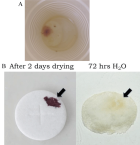
Figure 2

Figure 3

Figure 4

Figure 5

Figure 6

Figure 7
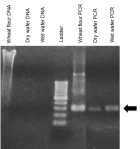
Figure 8
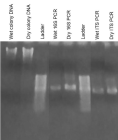
Figure 9
Similar Articles
-
Awareness level on the role of forensic DNA database in criminal investigation in Nigeria: A case study of Benin cityNwawuba Stanley Udogadi*,Akpata Chinyere Blessing Nkiruka . Awareness level on the role of forensic DNA database in criminal investigation in Nigeria: A case study of Benin city. . 2020 doi: 10.29328/journal.jfsr.1001019; 4: 007-014
-
Awareness level on the relevance of forensics in criminal investigation in NigeriaOmorogbe Owen Stephen,Orhue Osazee Kelvin,Ehikhamenor Edeaghe,Nwawuba Stanley Udogadi*. Awareness level on the relevance of forensics in criminal investigation in Nigeria. . 2021 doi: 10.29328/journal.jfsr.1001028; 5: 053-057
-
Comparative analysis of mobile forensic proprietary tools: an application in forensic investigationParth Chauhan*,Tamanna Jaitly,Animesh Kumar Agrawal. Comparative analysis of mobile forensic proprietary tools: an application in forensic investigation. . 2022 doi: 10.29328/journal.jfsr.1001039; 6: 077-082
-
Forensic Analysis of WhatsApp: A Review of Techniques, Challenges, and Future DirectionsNishchal Soni*. Forensic Analysis of WhatsApp: A Review of Techniques, Challenges, and Future Directions. . 2024 doi: 10.29328/journal.jfsr.1001059; 8: 019-024
-
Analysis and Comparison of Social Media Applications Using Forensic Software on Mobile DevicesHüseyin Çakır*, Merve Hatice Karataş . Analysis and Comparison of Social Media Applications Using Forensic Software on Mobile Devices. . 2024 doi: 10.29328/journal.jfsr.1001065; 8: 058-063
-
Scientific Analysis of Eucharistic Miracles: Importance of a Standardization in EvaluationKelly Kearse*,Frank Ligaj. Scientific Analysis of Eucharistic Miracles: Importance of a Standardization in Evaluation. . 2024 doi: 10.29328/journal.jfsr.1001068; 8: 078-088
Recently Viewed
-
Synthesis of Carbon Nano Fiber from Organic Waste and Activation of its Surface AreaHimanshu Narayan*,Brijesh Gaud,Amrita Singh,Sandesh Jaybhaye. Synthesis of Carbon Nano Fiber from Organic Waste and Activation of its Surface Area. Int J Phys Res Appl. 2019: doi: 10.29328/journal.ijpra.1001017; 2: 056-059
-
Obesity Surgery in SpainAniceto Baltasar*. Obesity Surgery in Spain. New Insights Obes Gene Beyond. 2020: doi: 10.29328/journal.niogb.1001013; 4: 013-021
-
Tamsulosin and Dementia in old age: Is there any relationship?Irami Araújo-Filho*,Rebecca Renata Lapenda do Monte,Karina de Andrade Vidal Costa,Amália Cinthia Meneses Rêgo. Tamsulosin and Dementia in old age: Is there any relationship?. J Neurosci Neurol Disord. 2019: doi: 10.29328/journal.jnnd.1001025; 3: 145-147
-
Case Report: Intussusception in an Infant with Respiratory Syncytial Virus (RSV) Infection and Post-Operative Wound DehiscenceLamin Makalo*,Orlianys Ruiz Perez,Benjamin Martin,Cherno S Jallow,Momodou Lamin Jobarteh,Alagie Baldeh,Abdul Malik Fye,Fatoumatta Jitteh,Isatou Bah. Case Report: Intussusception in an Infant with Respiratory Syncytial Virus (RSV) Infection and Post-Operative Wound Dehiscence. J Community Med Health Solut. 2025: doi: 10.29328/journal.jcmhs.1001051; 6: 001-004
-
The prevalence and risk factors of chronic kidney disease among type 2 diabetes mellitus follow-up patients at Debre Berhan Referral Hospital, Central EthiopiaGetaneh Baye Mulu,Worku Misganew Kebede,Fetene Nigussie Tarekegn,Abayneh Shewangzaw Engida,Migbaru Endawoke Tiruye,Mulat Mossie Menalu,Yalew Mossie,Wubshet Teshome,Bantalem Tilaye Atinafu*. The prevalence and risk factors of chronic kidney disease among type 2 diabetes mellitus follow-up patients at Debre Berhan Referral Hospital, Central Ethiopia. J Clini Nephrol. 2023: doi: 10.29328/journal.jcn.1001104; 7: 025-031
Most Viewed
-
Evaluation of Biostimulants Based on Recovered Protein Hydrolysates from Animal By-products as Plant Growth EnhancersH Pérez-Aguilar*, M Lacruz-Asaro, F Arán-Ais. Evaluation of Biostimulants Based on Recovered Protein Hydrolysates from Animal By-products as Plant Growth Enhancers. J Plant Sci Phytopathol. 2023 doi: 10.29328/journal.jpsp.1001104; 7: 042-047
-
Sinonasal Myxoma Extending into the Orbit in a 4-Year Old: A Case PresentationJulian A Purrinos*, Ramzi Younis. Sinonasal Myxoma Extending into the Orbit in a 4-Year Old: A Case Presentation. Arch Case Rep. 2024 doi: 10.29328/journal.acr.1001099; 8: 075-077
-
Feasibility study of magnetic sensing for detecting single-neuron action potentialsDenis Tonini,Kai Wu,Renata Saha,Jian-Ping Wang*. Feasibility study of magnetic sensing for detecting single-neuron action potentials. Ann Biomed Sci Eng. 2022 doi: 10.29328/journal.abse.1001018; 6: 019-029
-
Pediatric Dysgerminoma: Unveiling a Rare Ovarian TumorFaten Limaiem*, Khalil Saffar, Ahmed Halouani. Pediatric Dysgerminoma: Unveiling a Rare Ovarian Tumor. Arch Case Rep. 2024 doi: 10.29328/journal.acr.1001087; 8: 010-013
-
Physical activity can change the physiological and psychological circumstances during COVID-19 pandemic: A narrative reviewKhashayar Maroufi*. Physical activity can change the physiological and psychological circumstances during COVID-19 pandemic: A narrative review. J Sports Med Ther. 2021 doi: 10.29328/journal.jsmt.1001051; 6: 001-007

HSPI: We're glad you're here. Please click "create a new Query" if you are a new visitor to our website and need further information from us.
If you are already a member of our network and need to keep track of any developments regarding a question you have already submitted, click "take me to my Query."







